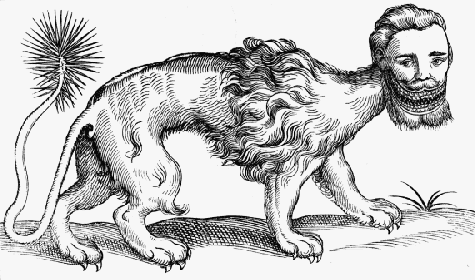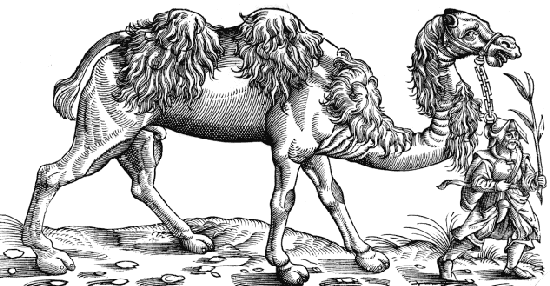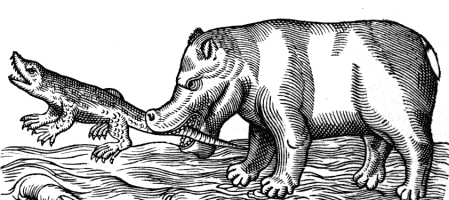Topsell's Beasts
Today, a look at 17th-century zoology. The University of Houston's College of Engineering presents this series about the machines that make our civilization run, and the people whose ingenuity created them.
Galileo died, and Newton was born, in the same year -- 1642. Our modern science was just taking form in the middle 17th century. But I have here a wonderful book on zoology, written in 1658 by a cleric named Edward Topsell. It shows us the world that the new scientific method was overturning. The book's title begins,
The HISTORY of Four-footed Beasts and Serpents Describing at Large Their True and Lively Figure, their Several names, Conditions, Kinds, Virtues ...
and it goes on for several more lines. In the book is all you'd ever dare to know about any beast. The illustrations are priceless, and I'll let the text speak for itself. Quoting a Roman authority, he tells us that,
Dogs have reason, and use logik in their hunting.
But he's compelled to add that
It is the nature of a Dog, when he maketh water, to hold up his leg ...
We're told that apes are terrified of snails, and that horses love "musik." Of elephants he says,
At the sight of a beautiful woman they leave off all rage and grow meek and gentle.
We also find that
The blood of an Elephant and the ashes of a Weasil, cure ... Leprosie,
and that touching his trunk cures headaches.
Hippopotamos is the Greek word for what he calls the sea horse. He says it "is a most ugly and filthy beast," but he lists it as a kind of horse. His illustration shows one eating a crocodile. He says that
The ... procreation of mice is not only by copulation, but also nature worketh wonderfully in ingenduring them by earth.
He's not kidding. He means mice are spontaneously generated in dirt. We find that if a cat licking you with her rough tongue draws blood, the mixture of blood with her spittle will drive her mad.
Among his animals you meet Gorgons, Sphinxes, and Lamias. These seem to be mixtures of real animals with the mythical beasts. But there's no such ambiguity about the Winged Dragon or the Unicorn. He faces up to the doubters, saying,
... lest it should seem incredible, as the foolish world is apt to believe no more than they see, I have [added] the testimonies of sundry learned men.
All around Edward Topsell, today's rules for accepting scientific truth were taking shape. Topsell, too, was concerned with validation. He says at the outset,
I would not have the Reader ... imagine I have ... related all that is ever said of these Beasts, but only [what] is said by many.
Under his rules, he accepted that
... the horn of the unicorn ... doth wonderfully help against poyson,
because several people had told him it did. The FDA would want more than consensus before it approved that remedy, I'm afraid. But then, they've never produced anything like this beautiful 300-year-old volume.
I'm John Lienhard, at the University of Houston, where we're interested in the way inventive minds work.
(Theme music)
Topsell, E., The History of Four-Footed Beasts and Serpents and Insects. New York: Da Capo Press, 1967. (This is a facsimile of the original 1607 edition.)
I am grateful to Pat Bozeman, UH Special Collections, for introducing me to a later 17th-century edition of the work: Topsell, E., The history of four-footed beasts and serpents ... collected out of the writings of Conradus Gesner and other authors. Whereunto is now added, The theater of insects; or, lesser living creatures ... by T. Muffet. London : Printed by E. Cotes, for G. Sawbridge T. Williams and T. Johnson, M DC LVIII. [1658]
This episode has been substantially rewritten as Episode 1586.

The fabled Mantichora

A very real (if imaginative) bactrian camel

And a carnivorous hippopotamus
(All images from HISTORY of Four-footed Beasts Ö 1607/1658, courtesy of Special Collections, UH Library)